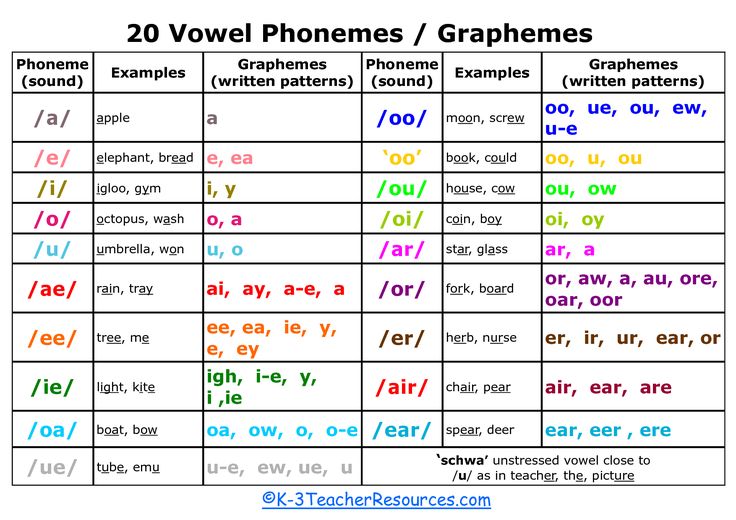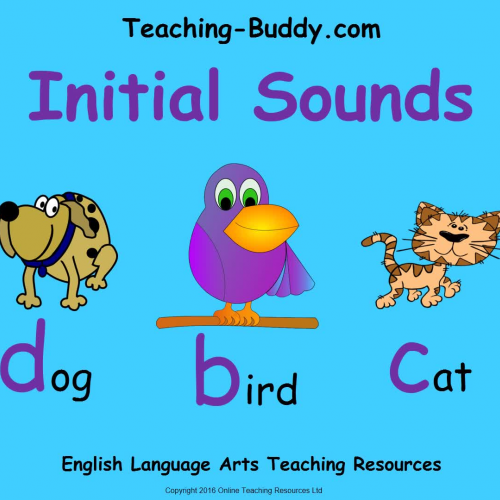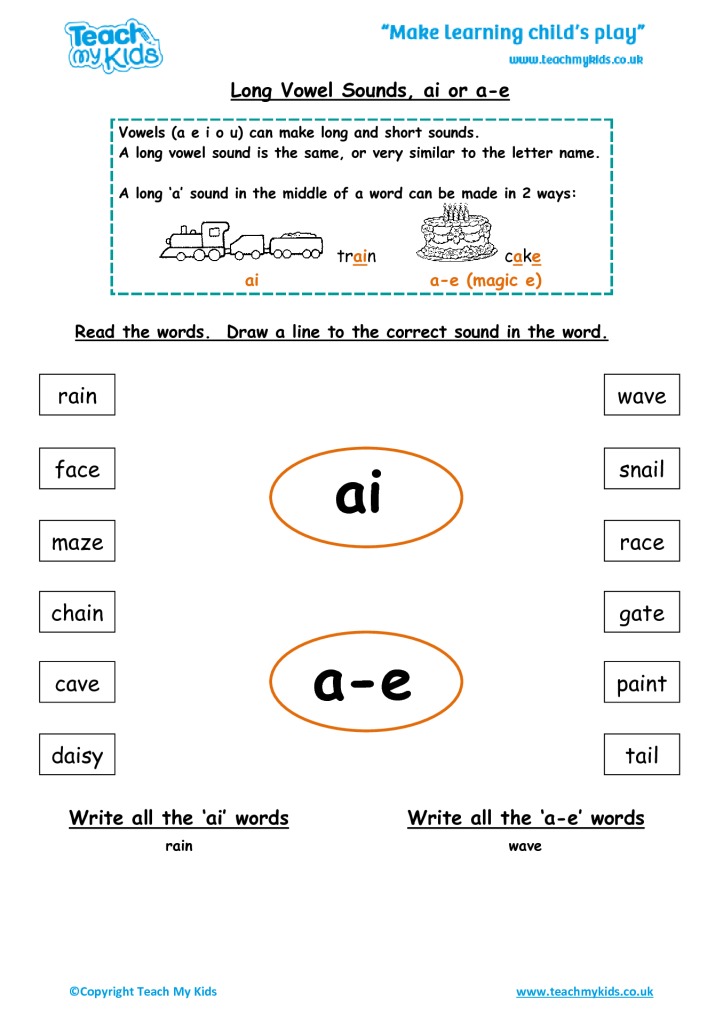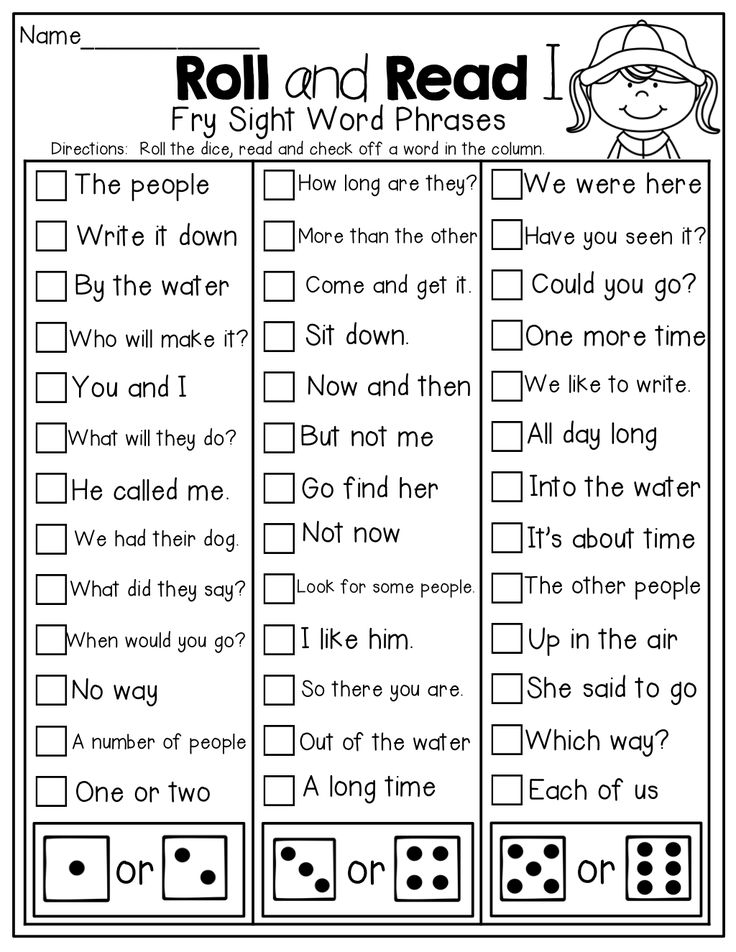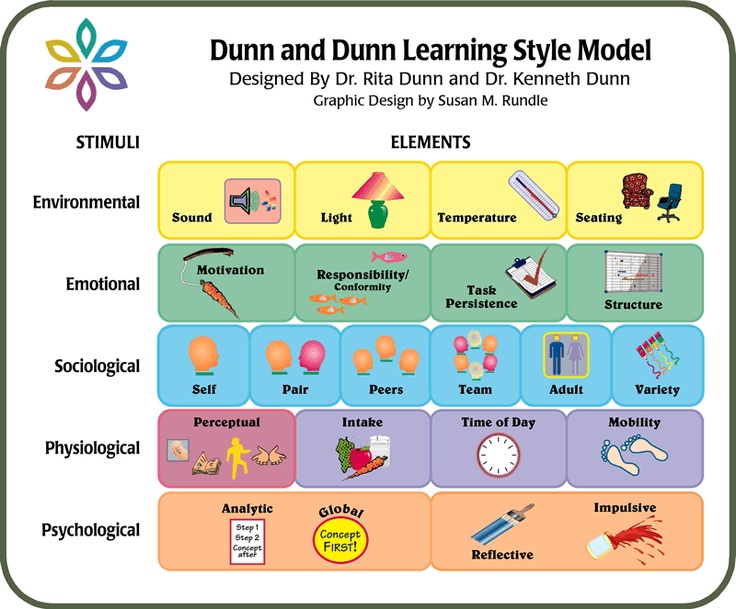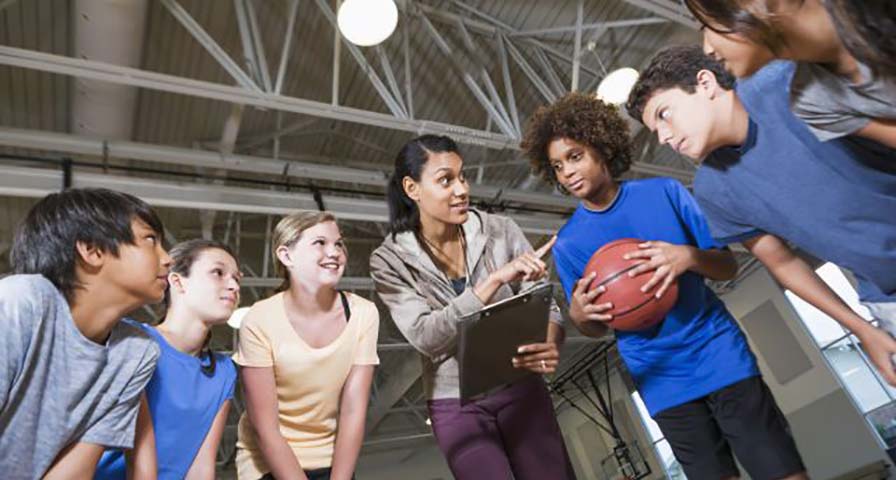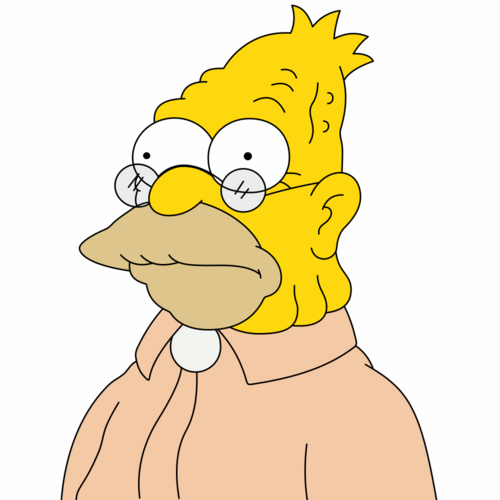Teaching preschoolers about shapes
How to Teach Shape Recognition to Preschoolers with Fun Activities
You are here: Home / Math / How to Teach Shape Recognition to Preschoolers with Fun Activities
by Sheryl Cooper
Inside: How to Teach Shape Recognition to Preschoolers with Fun Activities with Free Printable
One of the areas we have to cover in our preschool assessments is shapes. I am always looking for ways to build shape recognition skills, but I want them to be playful and authentically blend in with our other hands-on activities.
I decided to put together my own collection of shape recognition activities by doing a little searching.
After weeding out the results, I came up with over 16 ideas that I knew would be perfect. Not only are they fun, but they involve building other skills, too. I always love that!
So put away those flashcards, my friends. These fun activities will help your preschoolers learn to identify circles, triangles, squares, rectangles, and ovals.
👉 Bonus! I created a shape matching activity printable for your children. Scroll towards the bottom of this post to get the download.
I’ve also put together a collection of activities for math and literacy that are also hands-on and appropriate for this age group:
- Preschool Math Activities
- Preschool Literacy Activities
How to Teach Shape Recognition to Preschoolers with Fun Activities
Build shape recognition using toys.
Mix colors while stamping circles from paper tubes.
Take apart your nesting toys to stamp shapes with paint.
Make a simple shape collage. (Homegrown Friends)
Go on a shape hunt at the playground (free printable included). (Buggy and Buddy)
Paint with different shapes of foam blocks. (Meri Cherry)
Make a shape puzzle using blocks you already have. (Twodaloo) (ETA: Unfortunately website is no longer running.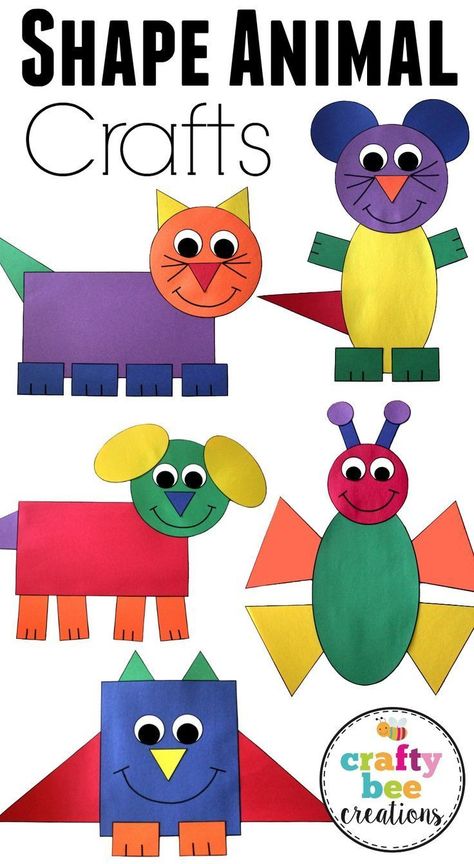 )
)
Trace shapes on a chalkboard. (Hands On As We Grow)
Create a fine motor shape bin. (Stir the Wonder)
Make a shape sorting activity from an ice cube tray. (Mess for Less)
Make paper roads in different shapes and trace with cars. (Adventures of Adam)
Play shape hopscotch indoors! (Housing a Forest)
Use colored construction paper to create a train color sorting activity. (Mom Inspired Life)
More shapes activities:
Toddler Triangle Shapes Activity
15 Activities for Teaching Squares
Shapes Art Using Toys
Teaching Circles to Toddlers and Preschoolers
Going on a Circle Hunt Circle Time Activity
Here’s a simple shape matching activity for your children to try today! Click on the photo for the link to the PDF download:
More shape fun for your preschoolers!
These clever little rhymes teach children how to draw the shape and what objects in real life look like that shape.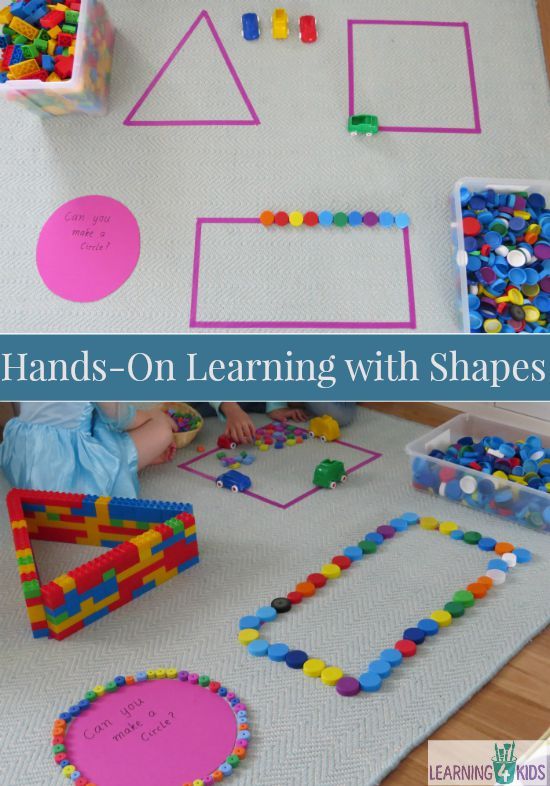
Along with 8 shape rhymes, you’ll also receive the audio version of the chants and printable shape booklets!
Click here for more information.
FREE CIRCLE TIME PLANNER!
Get your FREE circle time planner as a gift when you subscribe to my free weekly newsletters.
Here is my Privacy Policy
Filed Under: Math, preschool, Toddler Math Tagged With: preschool, printable, shapes
About Sheryl Cooper
Sheryl Cooper is the founder of Teaching 2 and 3 Year Olds, a website full of activities for toddlers and preschoolers. She has been teaching this age group for over 20 years and loves to share her passion with teachers, parents, grandparents, and anyone with young children in their lives.
Reader Interactions
The Ultimate Guide to Teaching Shapes to Preschoolers
Here is everything you need to know about shapes for preschoolers! We’ll learn all about how to teach naming, constructing, and comparing 2D and 3D shapes – and why they’re important.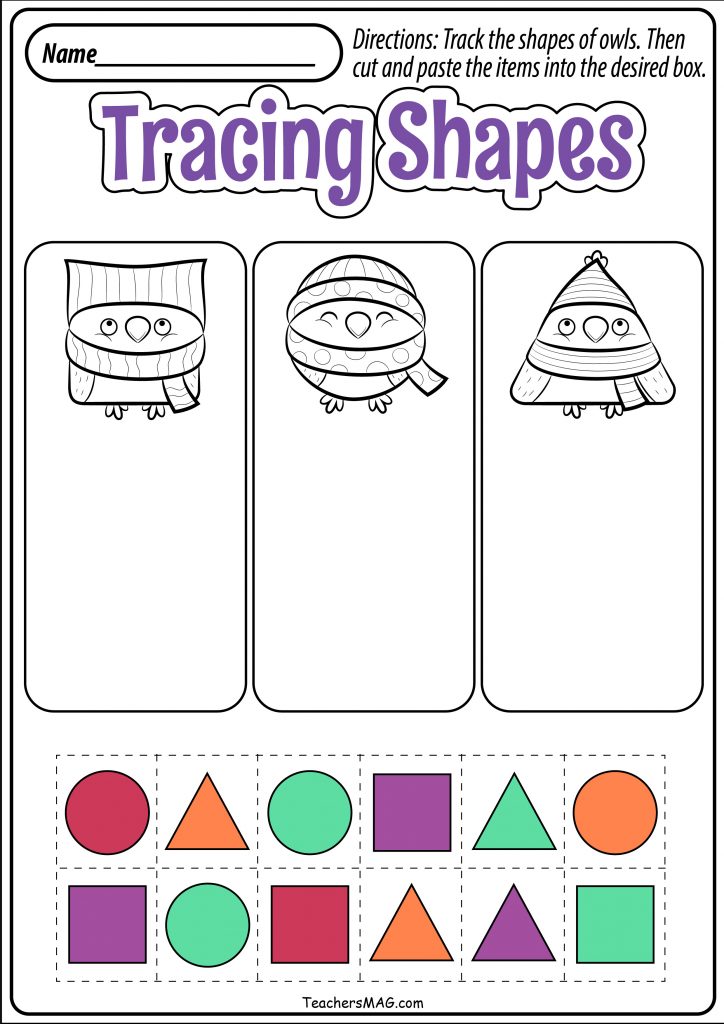
Giving preschoolers the tools they need to be successful in math is essential. A robust preschool math curriculum will include instruction in all five disciplines of math. This includes teaching preschoolers within the geometry discipline; aka: shapes!
What You Need to Know About Teaching Shapes to Preschoolers
There are so many fun, hands-on shape activities to do!The Importance of Learning Shapes in Preschool
Learning shapes is the most basic skill within the geometry discipline of math, so it makes sense that we spend plenty of time teaching our preschoolers about shapes. But there’s more to shapes than just their names.
Shapes are the foundation of geometry! In a preschool setting, geometry skills include identifying shapes, comparing shapes, differentiating between shapes, and creating shapes.
Learning shapes helps children identify and organize visual information. Learning shapes also helps children understand other signs and symbols, such as street signs or icons on a computer app. Teaching shapes to preschoolers encourages them to visualize and connect to the world around them.
Teaching shapes to preschoolers encourages them to visualize and connect to the world around them.
Additionally, preschoolers apply what they know about numbers to each shape. How many sides does a square have? A triangle? How can we apply that knowledge to a circle which has no flat sides?
Can you make the three sides of a triangle?What Does Geometry Look Like in Preschool?
Geometry is a lot more than simply knowing shapes. It’s also about how to manipulate those shapes and how to fit them into different special concepts.
Geometry is one of the six primary strands of math that is considered foundational to later mathematical learning. Basic geometric principles connect directly to other mathematical concepts and skills, such as naming, constructing, comparing, and sorting, and children as young as early toddlers are developmentally ready to explore basic geometric principles.
During the toddler and preschool years, children amake connections in geometry by analyzing the properties of two and three-dimensional shapes.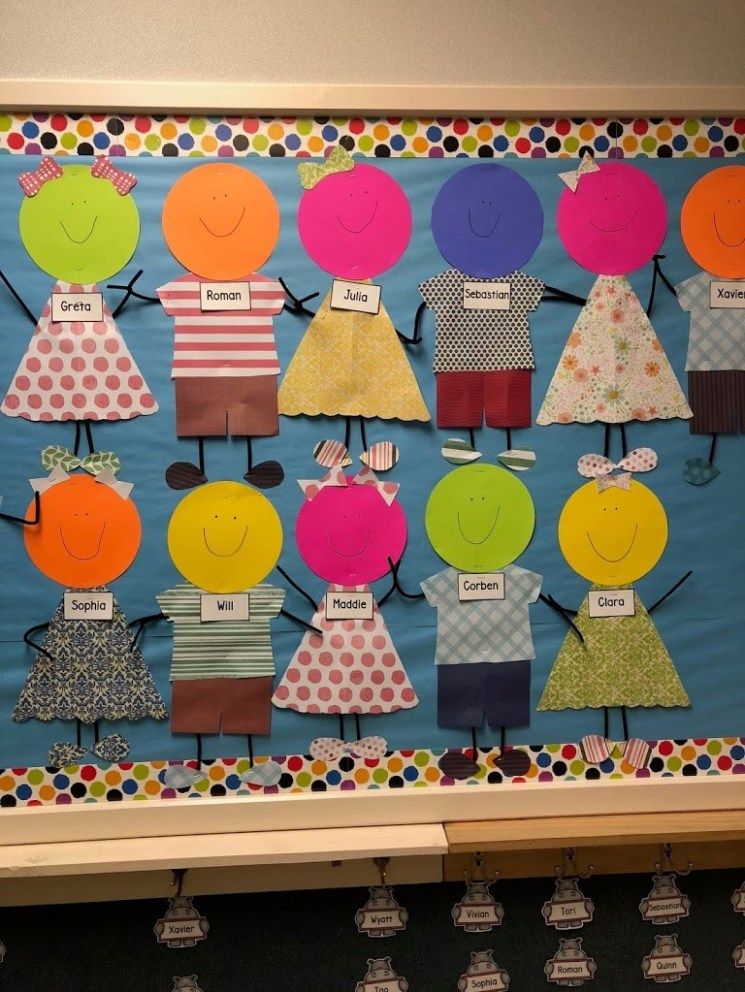 A box has corners and can be stacked, a ball is round and can be rolled.
A box has corners and can be stacked, a ball is round and can be rolled.
Children practice composing by building, and decomposing by taking apart shapes. If a square is smooshed, it becomes a rectangle, if a circle is smooshed, it becomes an oval.
They interpret direction by using location terms such as “above” and “next to.” The amount of learning that takes place while playing with shapes, two-dimensional or otherwise, should not be underestimated.
Geometry Skills in Preschool Also Include the Following:
- Knowledge of shape names
- Knowledge of some shape attributes (a circle is round, a triangle is pointy)
- Completing 16-24 piece puzzles
- Stacking blocks
The Power of Spatial Awareness at an Early Age
Playing with shapes develops spacial relationships and knowledge of relative positions, and can require immense amounts of planning, such as the child who builds a tower like the one in her favorite storybook.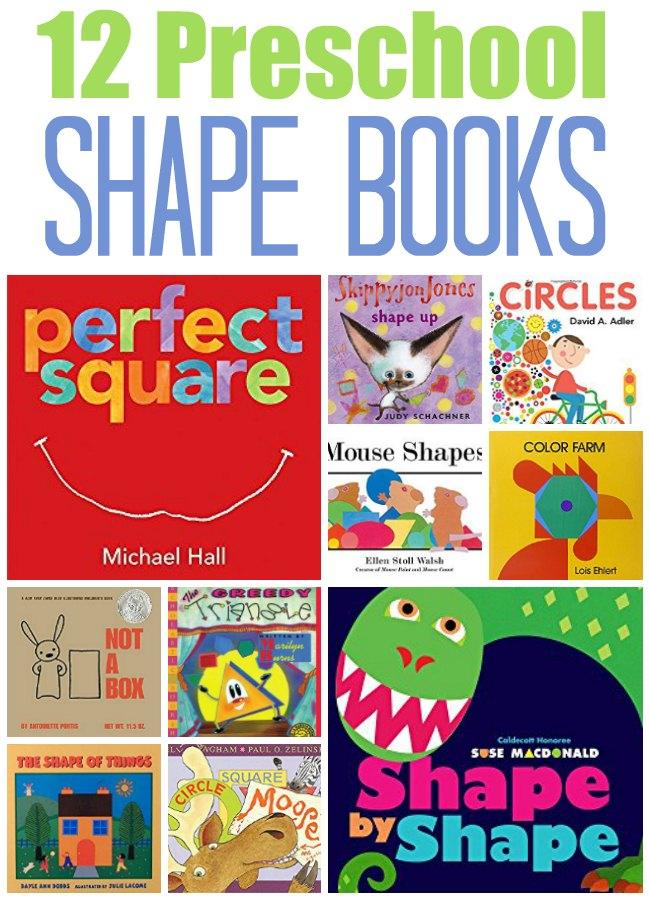
Preschoolers learn that they can combine two squares to make a rectangle. Or that triangles can be combined in different orientations to create a semi-circle.
What happens when we turn a shape upside down? Is it still the same shape even if it looks different? These skills develop spatial reasoning and spatial orientation which develops problem-solving and critical thinking skills.
For example, completing puzzles is a beginning geometry skill. Children are given a shape of some sort to fit into another shape, thus requiring them to manipulate the puzzle piece within a set space.
Sounds a bit like developing spatial awareness, right? It certainly is, and that’s an important skill for preschoolers as they are learning, even, how to manipulate their bodies to fit in the available space. Ever seen a preschooler try to sit on a specific mat during circle time and completely miss it? That’s not just a lack of coordination, but rather a spatial awareness skill that lacks development.
What Are Some Tips For Teaching Shapes in Preschool?
When teaching shapes in early childhood, it’s important to provide authentic and real-life practice with shapes as often as possible. Use engaging and interesting manipulatives, rather than strictly paper and pencil tasks. Here are some of our go-to’s!
Quality preschool shape activities can be found all over the classroom. There are hands-on, active opportunities to discuss, interact, and “play” with shapes in almost every corner of the classroom. The plates in the dramatic play area, the pattern on the baby doll’s clothes, and the squares on the calendar for each day of the week extend the shape exploration beyond the math center. Invite children to pay attention to their world and you’ll be amazed at what they detect!
Fun Ways to Teach Shapes
The more variety and the more hands-on learning activities you can offer, the better your preschooler or toddler will learn. For success in teaching shapes for prek and preschool, try some of these tips:
- Make a fun shapes sensory bin using shapes from around the house or classroom, foam shapes, or even cut out shapes from magazines.
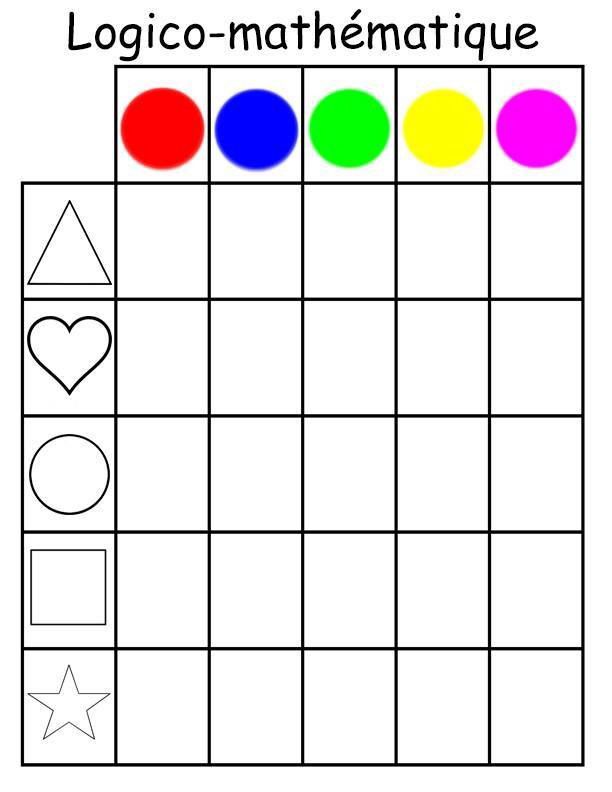
- Use printable shape mats.
- Read high-quality books about shapes. See our suggestions below!
- Hide shapes around the room and seek them out.
- Hunt for shapes in real life and make connections between 2D and 3D shapes.
- Use manipulatives such as pattern blocks, geoboards, playdough, popsicle sticks, and various craft items to encourage shape creation and manipulation.
- Cut out shapes from construction paper and glue them together to make artwork or shape collages.
Teachers can help build on these concepts by asking questions such as:
- How do you know how many sides?
- Can you tell me more about that?
- How can we use these shapes in a different way? Can we turn the shapes or combine them to make a new shape?
- What happens if you try that again? Is it the same?
- Can we compare this 2D shape to this 3D shape? How are they alike? How are they different?
Children are naturally curious and might notice that triangles come in different variations and sizes but are still considered a triangle because they have three sides. Encourage creativity and provide opportunities for children to develop their spatial awareness skills by fitting different shapes together to make new shapes.
Encourage creativity and provide opportunities for children to develop their spatial awareness skills by fitting different shapes together to make new shapes.
Use Shape Picture Books!
Another amazing resource for teaching shapes to preschoolers is picture books! These age-appropriate books break down the various shape names, the difference between two-dimensional and three-dimensional, and the fun of finding shapes in our everyday life. Here are some of our classroom favorites!
Get the Daily Lessons in Our Shapes Preschool Unit
Free Shape Activities for Preschoolers
The Secrets to Teaching Math to Preschoolers
Teaching math is an enormous task, and setting the foundation for our youngest learners is a lot of pressure.
That’s because there is a lot that goes into teaching math. It’s comprehensive and systematic. And learning shapes is only one piece of the puzzle.
Mathematicians indicate there are five disciplines of math (like mentioned above) that should be taught, which are as follows:
- number sense – the development of a deep understanding of numbers and the number system, to compose and decompose numbers and understand their various relationships
- algebra – the understanding of patterns and relationships, including sorting and categorizing
- geometry – the understanding of spatial relationships, prepositional terms, and the properties of two and three-dimensional shapes
- measurement – the ability to make comparisons and order, understanding measurable attributes
- data analysis and probability – (you are here) understanding data as a means of sharing organized information and understanding that certain variables affect data
Get Daily Lessons in Preschool Mathematics
Remember how I said that teaching math to preschoolers is systematic? That means you can’t put the cart before the horse.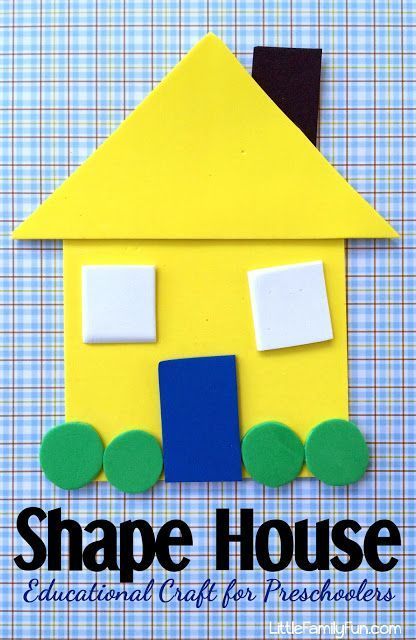 When it comes to teaching math, the skills need to be taught at the right time and in the right order.
When it comes to teaching math, the skills need to be taught at the right time and in the right order.
Make teaching preschool math easy with done-for-you Daily Lessons in the Preschool Mathematics Curriculum.
Lauren Vaughan
I am an educator, book enthusiast, and a stay at home momma to two precious and long-awaited littles. My degree is in Early Childhood Education and Curriculum and Instruction and I have spent the last 15 years working with young children. I feel very fortunate to have this time to watch my babies grow and I can’t wait to share my passion for learning and reading with you!
Learning Geometric Shapes: Games for Preschoolers
One of the important aspects of the development of mathematical concepts in preschoolers is the study of the basics of geometry. In the course of acquaintance with geometric shapes, the child acquires new knowledge about the properties of objects (shape) and develops logical thinking. In this article, we will talk about how to help a preschooler remember geometric shapes, how to properly organize games for teaching geometry, and what materials and aids can be used to develop a child’s mathematical abilities.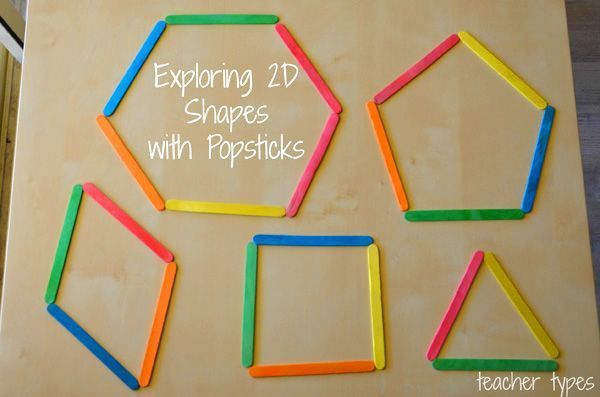
At what age can one start learning geometric shapes?
Many parents are wondering if young children need to get acquainted with geometric shapes. Experts believe that it is optimal to start classes in a playful, relaxed form from the age of 1.5. Until this age, it is appropriate to pronounce to the child the names of the shapes of objects that the baby meets in real life (for example, “round plate”, “square table”).
Introducing the child to geometric shapes, be guided by his reaction. If your baby started to show interest in them at an early age (by playing with the sorter or looking at pictures), encourage his curiosity.
At the age of 2, the baby should be able to distinguish between:
- Circle;
- Square;
- Triangle.
By the age of 3 you can add:
- Oval;
- Rhombus;
- Rectangle.
At an older age, a child can memorize such shapes as a trapezoid, a pentagon, a hexagon, a star, a semicircle.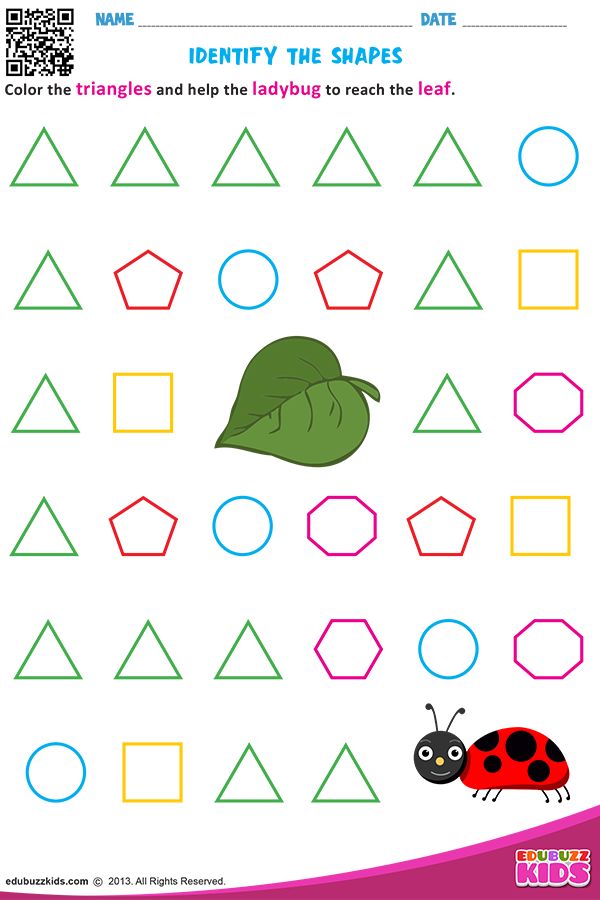 Also, children visiting the Constellation Montessori Center get acquainted with geometric bodies with interest.
Also, children visiting the Constellation Montessori Center get acquainted with geometric bodies with interest.
How can I help my child remember geometric shapes?
Teaching a child geometric shapes should take place in stages. You need to start new figures only after the baby remembers the previous ones. The circle is the simplest shape. Show your child round objects, feel them, let the baby run his finger over them. You can also make an application from circles, mold a circle from plasticine. The more sensations associated with the concept being studied, the child receives, the better the baby will remember it.
Three-dimensional figures can be used to get acquainted with the forms. It can be made by a designer, a sorter, lacing, frame inserts. Since at an early age the visual-effective type of thinking is most developed, various actions with figures will help to remember them better.
How children of different ages perceive geometric figures
The operations that a child can perform with geometric figures and how he perceives shapes depend on the age of the baby.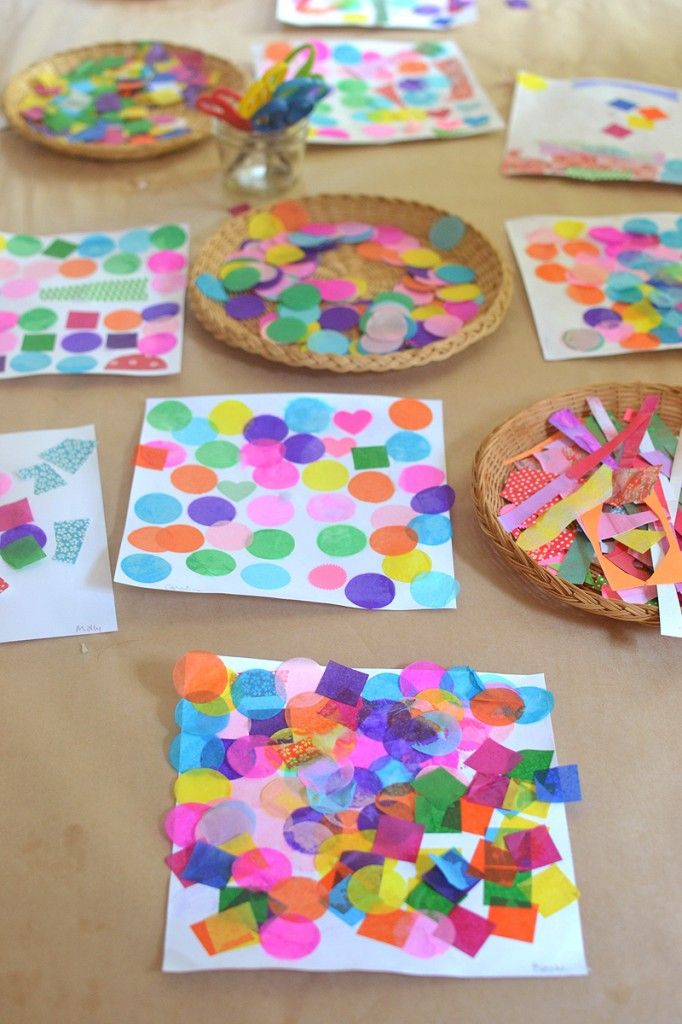 In accordance with age characteristics, the following stages of training can be distinguished:
In accordance with age characteristics, the following stages of training can be distinguished:
- In the second year of life, the baby is able to visually recognize familiar figures and sort objects according to shape.
- At 2 years old, a child can find the desired shape among a number of other geometric shapes.
- By the age of 3, babies can name shapes.
- At the age of 4, a child is able to correlate three-dimensional figures with a flat image.
- At senior preschool age (and sometimes even earlier) you can start studying geometric bodies (ball, cube, pyramid). Also at this age, the child can analyze complex pictures consisting of many shapes.
Regardless of the child's age, try to pay attention to the shapes of surrounding objects and compare them with known geometric shapes. This can be done at home and on the go.
Games for learning geometric shapes
For a child to be interested, learning geometric shapes should take place in a playful way.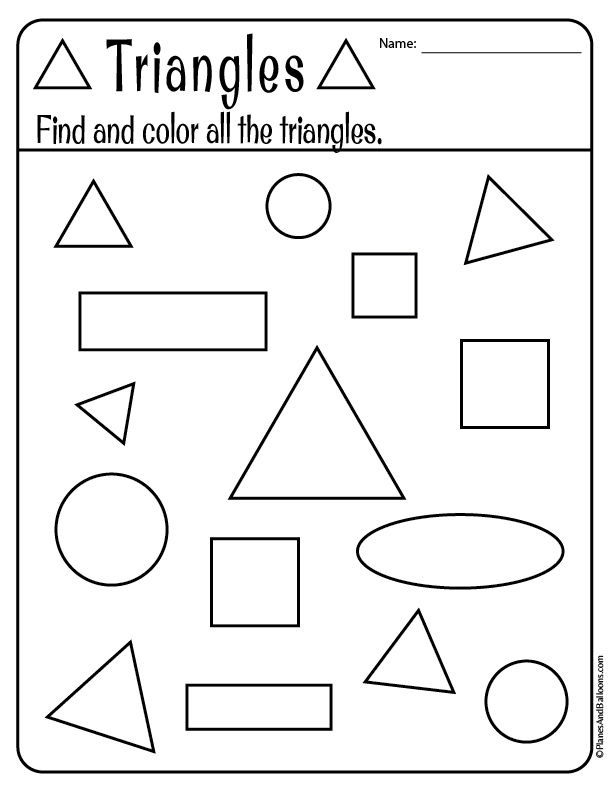 You should also select bright and colorful materials for classes (you can buy them in a store or do it yourself). Here are some examples of games and tutorials for learning geometric shapes:
You should also select bright and colorful materials for classes (you can buy them in a store or do it yourself). Here are some examples of games and tutorials for learning geometric shapes:
- Sorting. Games with a sorter can be started from the age of 1. Invite the child to find its window for the figure. So the child will not only memorize geometric shapes, but also develop fine motor skills, thinking and spatial representations, because in order for the part to fall into the hole, you need to turn it at the right angle. You can also sort any other items, such as building blocks, Gyenesch blocks, or counting material.
- Insert frames. In fact, this manual is similar to a sorter. For each geometric figure, you need to find its place.
- Geometric lotto. To play, you will need a field with the image of geometric shapes and handout cards with each figure separately. A child can take small cards out of a chest or bag, and then look for their place on the playing field.
 This game also perfectly trains the attention of the baby.
This game also perfectly trains the attention of the baby. - Geometric appliqué. Cut out various geometric shapes from paper and, together with your child, make a picture out of them (for example, you can make a Christmas tree from triangles, a house from a square and a triangle).
- Drawing (including stencils).
- Modeling.
- Laying out figures from counting sticks.
- Geometric mosaic.
- Laces with geometric shapes.
- Card games.
- Guess by touch.
- Active games. Draw geometric shapes on the pavement with chalk. Ask the kid to imagine that the figures are houses that you need to run into on a signal. Next, you name a geometric figure, and the child runs to it.
In addition, educational cartoons can be used to study geometric shapes. Here is one of them:
Conclusions
Learning the basics of geometry at preschool age is an important part of developing a child's mathematical and sensory representations. Acquaintance with the figures should occur gradually (first, simple figures - a circle, a square, a triangle). To keep your child interested, study geometric shapes in a playful way. Your assistants in this can be such educational aids as insert frames, mosaics, lotto, sorters, sets of geometric shapes and bodies, stencils. You can also study geometric shapes on the street: just talk to your child about what you see around and what shapes these objects look like. Then the kid will definitely learn to distinguish geometric shapes and remember their names.
Conclusion
Montessori environment has been specially created for the comprehensive and harmonious development of each child in the children's center "Constellation". In the process of free work in it, children not only get acquainted with the basics of geometry, but also develop their cognitive processes, fine motor skills, learn to write, read, and count. In addition, the Montessori environment gives the child the opportunity to fully demonstrate independence and responsibility. We will be glad to see you and your baby at our center!
In addition, the Montessori environment gives the child the opportunity to fully demonstrate independence and responsibility. We will be glad to see you and your baby at our center!
Prepared by a Montessori teacher
Malysheva Evgeniya
It is useful to encourage children to find the most convenient (rational) ways of dividing objects into parts, taking into account the size into parts, taking into account their size, shape, proportions. For example, you need to compare how easy it is to divide a narrow strip (tape) and a square (a piece of fabric) into 4 parts. Children decide that it is more convenient to fold a narrow strip along the length in half and in half again, and fold the square in sequence with opposite sides. In one of the last lessons on this topic, it is advisable to compare the results of dividing objects of different sizes into equal parts.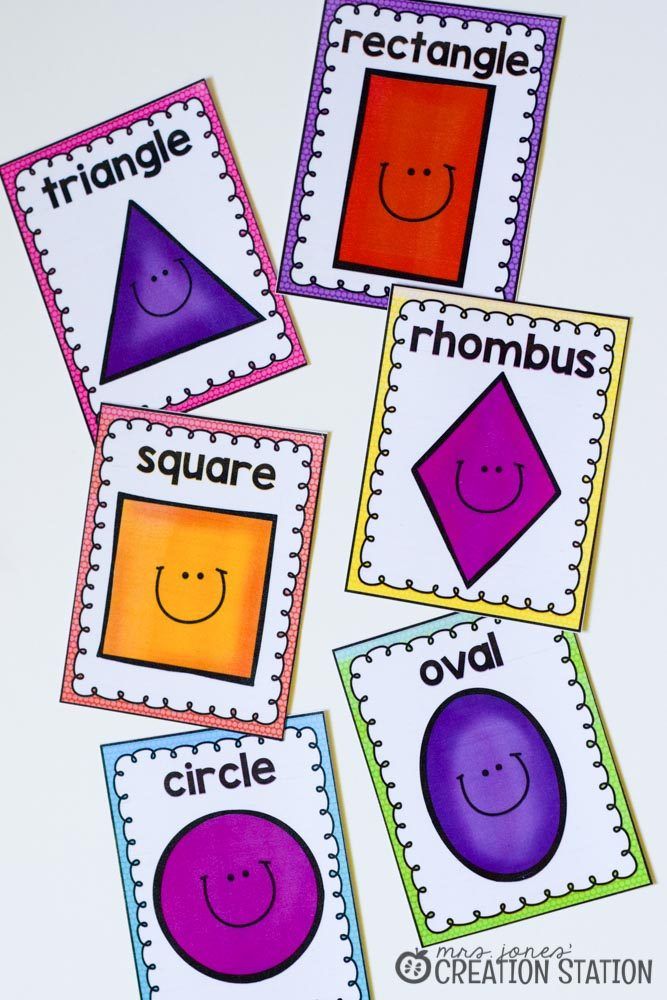 Children are presented with 2 objects of contrasting sizes, for example, a large and small circle or square. The teacher divides the figures into 2 (4) equal parts, takes 1 of the parts of each figure and asks the children to say what these parts can be called (“Half, 1 of 2, 1/2”). “This is half and this is half. Explain why they are different sizes. In subsequent lessons, exercises are carried out in dividing geometric shapes into 2, 4, 8 parts and in composing whole figures from parts: for example: “How should I fold and cut a square to get 2 equal rectangles? To get 2 equal triangles ”(You need to bend the square side to side to side or fold a corner with a corner.) Children talk about what shapes and how they laid out and what happened as a result of division, what shape of the part, how many of them. They also conduct special exercises in drawing up figures from parts: “How many circles can be added from 4 semicircles?” You can show parts of the figures: “This is 1 of 4 (1 of 2, 4 of 8) parts of the square.
Children are presented with 2 objects of contrasting sizes, for example, a large and small circle or square. The teacher divides the figures into 2 (4) equal parts, takes 1 of the parts of each figure and asks the children to say what these parts can be called (“Half, 1 of 2, 1/2”). “This is half and this is half. Explain why they are different sizes. In subsequent lessons, exercises are carried out in dividing geometric shapes into 2, 4, 8 parts and in composing whole figures from parts: for example: “How should I fold and cut a square to get 2 equal rectangles? To get 2 equal triangles ”(You need to bend the square side to side to side or fold a corner with a corner.) Children talk about what shapes and how they laid out and what happened as a result of division, what shape of the part, how many of them. They also conduct special exercises in drawing up figures from parts: “How many circles can be added from 4 semicircles?” You can show parts of the figures: “This is 1 of 4 (1 of 2, 4 of 8) parts of the square. Guess how many squares there were. Make them up." Helping the children, the teacher shows spare figures of the appropriate size. He concludes: half of the large circle is more than half of the small one, and half of the small one is less than half.
Guess how many squares there were. Make them up." Helping the children, the teacher shows spare figures of the appropriate size. He concludes: half of the large circle is more than half of the small one, and half of the small one is less than half.
Large objects, and their parts also of different sizes. It is expedient here to contrast the results of division into parts of objects equal in size. When carrying out exercises in dividing objects into equal parts, the teacher constantly makes sure that the children perform actions accurately, check the equality of parts, using the methods of imposition, as well as measuring with a conditional measure, teaches children to use the following words and expressions in speech: divide into equal parts, whole, half, in half, one of two parts, one of four parts, and a little later - one second, one fourth. The last expressions should not be specially memorized, children gradually memorize them. Each time, the guys count the parts, and putting them together, they get 1 whole item, establish the relationship between the whole and the part. As a result of a series of lessons, you can ask children questions that allow you to generalize knowledge: “How many times does a circle need to be folded to divide it into 2 (4.8) equal parts? If the square is folded in half 1 (2.3) times, how many parts will it be? If I ask you to give me half a pear, how many parts will you divide it into? What if I ask for 1/4? How many such parts of a whole pear? Into how many parts did I divide the whole if it is 1 part out of 4 (out of 2)? If we divide a large object and a small one in half, which half of the object will be larger? What about less? Why? » Dividing into parts allows you to show children the possibility of splitting objects into equal parts, to clearly identify the relationship between the whole and the part, and thus, a condition is created for children to understand the process of measuring quantities. When measuring, the object is, as it were, divided into parts, the sum of which characterizes its size.
As a result of a series of lessons, you can ask children questions that allow you to generalize knowledge: “How many times does a circle need to be folded to divide it into 2 (4.8) equal parts? If the square is folded in half 1 (2.3) times, how many parts will it be? If I ask you to give me half a pear, how many parts will you divide it into? What if I ask for 1/4? How many such parts of a whole pear? Into how many parts did I divide the whole if it is 1 part out of 4 (out of 2)? If we divide a large object and a small one in half, which half of the object will be larger? What about less? Why? » Dividing into parts allows you to show children the possibility of splitting objects into equal parts, to clearly identify the relationship between the whole and the part, and thus, a condition is created for children to understand the process of measuring quantities. When measuring, the object is, as it were, divided into parts, the sum of which characterizes its size.
After the children have mastered the techniques of measuring, they can be asked to divide a stick, a plank, a rectangle drawn on the board, etc.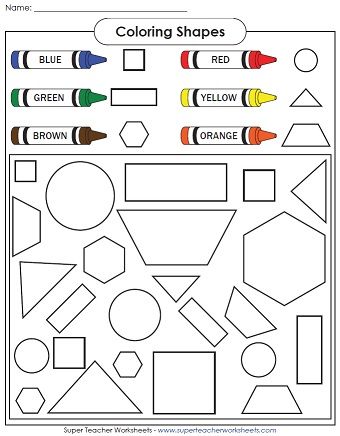 into 2, 4.8 equal parts. The guys see that these objects do not bend, the learned methods of division are not suitable. How to be? The teacher is in no hurry to give a hint. He lays out objects in front of the children that can be used as measurements. This is where children are helped by understanding the relationship between the size of objects and the size of their respective parts. 1 - 2 leading questions and the children guess that they need to choose a suitable measure, measure a piece equal to the length of the object, divide the measure (fold) into the appropriate number of parts and then measure these parts on the object, make marks with a pencil, chalk, etc.
into 2, 4.8 equal parts. The guys see that these objects do not bend, the learned methods of division are not suitable. How to be? The teacher is in no hurry to give a hint. He lays out objects in front of the children that can be used as measurements. This is where children are helped by understanding the relationship between the size of objects and the size of their respective parts. 1 - 2 leading questions and the children guess that they need to choose a suitable measure, measure a piece equal to the length of the object, divide the measure (fold) into the appropriate number of parts and then measure these parts on the object, make marks with a pencil, chalk, etc.
It is useful to exercise children in the division of geometric shapes drawn on paper in a cage. Children draw figures of a given size, and then, at the direction of the teacher, divide them into 2, 4, equal parts, measuring by cells. At the direction of the teacher, they draw segments from 2 to 10 cells from top to bottom or from left to right and divide them into equal parts equal to the length of 1,2,3,4,5 cells.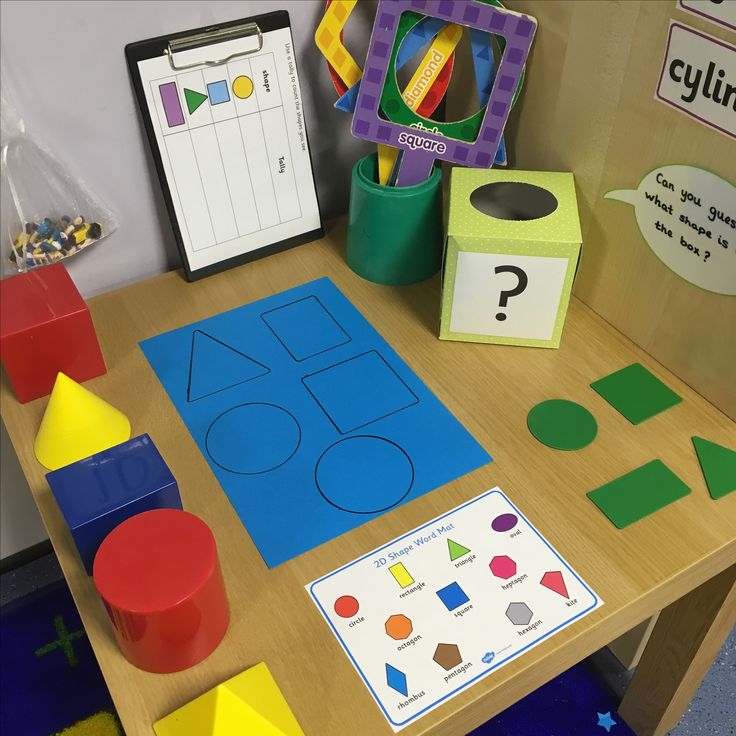 Establish connections between the size of the measurement and the number of resulting parts: “Into how many parts will the segment be divided if each part is equal to 2 cells? If we divide the segment into 3 equal parts, what will be 1 part? Exercises in dividing objects into equal parts allow you to move on to learning. Measurement, and measurement makes it possible to divide a wide variety of objects into parts.
Establish connections between the size of the measurement and the number of resulting parts: “Into how many parts will the segment be divided if each part is equal to 2 cells? If we divide the segment into 3 equal parts, what will be 1 part? Exercises in dividing objects into equal parts allow you to move on to learning. Measurement, and measurement makes it possible to divide a wide variety of objects into parts.
In mathematics classes, children learn to count, solve simple problems, add and subtract. It is very good that children study the calendar. When studying the calendar, they remember how many days are in a year, how many days are in a month, a week. As well as the name of the days. Learn to distinguish between the concepts of month, year, week and how many days in a week. When conducting classes, one should take into account the different levels of development and preparedness of children for classes. Not every child perceives information in full. The teacher should focus on those children who find the subject difficult, because later, in the first grade, it will be difficult for them to study the subject.



